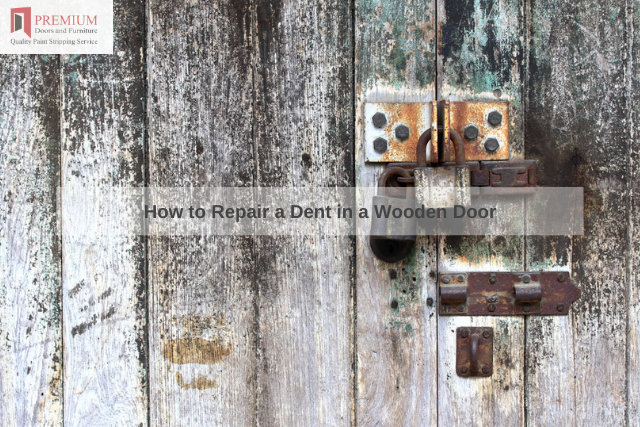High humidity poses a significant challenge for wooden doors as they tend to absorb moisture from the air, resulting in swelling. This swelling necessitates door repairs and a fresh coat of paint.
However, by implementing appropriate treatments and preventive measures, you can effectively address the problem, ensuring the doors remain in optimal condition while minimizing the risk of unnecessary losses.

Treatments for Swollen Doors
Sanding: Smoothing the Surface
Sanding is a crucial step in door maintenance, involving the use of sandpaper or sand to polish and smoothen the door’s surface.
This process is particularly important before applying a new coat of paint. Sanding serves the purpose of closing any pores on the wood, preventing moisture penetration during periods of high humidity.
Chemical Wood Stripper: Safely Removing Paint
If the door is already painted and becomes swollen, a chemical wood stripper should be used to safely and carefully remove the paint without causing damage to the wooden door. This process ensures that the door is ready for further treatment or repainting.
Preventive Measures for Swollen Doors
Dehumidifier: Regulating Humidity Levels
Using a dehumidifier is an effective solution for reducing and maintaining optimal humidity levels. This device absorbs moisture, preventing the door from absorbing excess dampness.
Notably, a dehumidifier consumes a minimal amount of energy and should be used with all doors and windows closed for maximum efficiency.
Sealer Application: Protecting the Wood
Applying a sealer is a protective measure that safeguards the wood from potential damage. The sealer creates a barrier, providing a protective layer to all parts of the door.
It is essential to apply the sealer thoroughly, paying special attention to the edges and faces, with a particular focus on the vertices. Multiple layers of sealer should be applied to ensure maximum protection against potential harm.
Heat Gun: Drying Out Moisture
To eliminate moisture trapped within the wood, a heat gun can be used effectively. By directing the heat gun towards the swollen areas, the moisture is evaporated, restoring the door to its original condition.
Conclusion
To maintain the quality and durability of wooden doors, it is crucial to implement preventive measures and treatments to address the issue of swelling.
By following these recommended approaches, you can significantly reduce the risk of damage and avoid unnecessary losses.
Remember to prioritize regular maintenance and take proactive steps to keep your doors in optimal condition.




